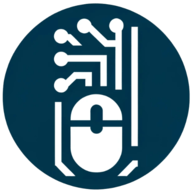7 Approaches to Code Reviews for Improving Team Code Quality
Unlock the full potential of your development team with proven strategies for code reviews that ensure quality and efficiency. This article delves into seven key areas, each illuminated by insights from seasoned experts, to help identify systemic issues and refine code standards. Embrace the transformative power of a well-structured code review process and elevate your team's coding practices.
- Identify Systemic Issues Through Code Reviews
- Refactor Code for Readability and Maintainability
- Establish Clear Coding Standards
- Foster a Culture of Constructive Feedback
- Prioritize Code Reviews in Workflow
- Automate Code Style and Security Checks
- Regularly Adapt Code Review Process
Identify Systemic Issues Through Code Reviews
Code reviews are essential, but when they don't go smoothly—resulting in numerous comments or major changes—it signals issues in the SDLC. These issues often stem from incomplete requirements, unclear acceptance criteria, lack of grooming, poor design/architecture review, weak team or cross-team synchronization, tooling gaps (IDE setup, linting, automation), lack of examples, templates, best practices, or inconsistent standards. A good code review reveals how healthy the engineering processes are and highlights areas for improvement, such as tech talks or knowledge sharing and all engineers' awareness.
For me as Senior Principal Software Engineer, code reviews aren't just about checking the code and test coverage against AC; they reveal deeper gaps in how teams work. Recurring issues often require changes beyond the author and reviewer, addressing the root-root-root causes. For example, improving grooming sessions, standardizing tools, or aligning teams through knowledge transfers. My approach focuses on fixing these systemic issues to create smoother reviews and a healthier engineering process overall. There is much good info like Google's code review standards that can guide general practices, but on my level I focus more on why problems happen and fixing the foundation.

Refactor Code for Readability and Maintainability
During a code review for a financial API, I spotted a nested loop that reused mutable objects, causing side effects where changes in one iteration unintentionally altered subsequent iterations. I suggested breaking it into smaller, focused functions to improve readability and maintainability. Initially, the developer resisted, but after refactoring together, the code became cleaner and easier to debug. Later, another team member extended the feature quickly without introducing bugs, validating the value of the review.
Establish Clear Coding Standards
Establishing clear coding standards is crucial for improving team code quality. It ensures consistency across the codebase, making it easier for team members to understand and maintain the code. Clear standards also reduce friction during code reviews, as developers know what is expected.
They help in identifying and fixing issues early, which saves time and resources. Additionally, having well-documented standards can be a great onboarding tool for new team members. Encourage the team to agree on these standards and regularly update them to align with best practices.
Foster a Culture of Constructive Feedback
Fostering a culture of constructive feedback is essential in code reviews. Constructive feedback helps developers learn and grow, improving their skills over time. It also helps in catching errors early and prevents bad practices from taking root in the codebase.
The focus on constructive feedback creates a supportive environment where team members feel valued. This culture encourages open communication and collaboration among developers. Make it a priority to give and receive feedback positively and regularly.
Prioritize Code Reviews in Workflow
Prioritizing code reviews in the workflow is another effective approach. When code reviews are given high importance, it ensures that they are not rushed or overlooked. This practice leads to more thorough reviews and higher quality code.
It also helps in identifying potential issues before they become major problems. Prioritizing code reviews can enhance team collaboration and knowledge sharing. Make time for code reviews an integral part of the development process.
Automate Code Style and Security Checks
Automating code style and security checks can greatly improve code quality. Tools that automatically check for code style and security issues can catch errors early. This allows developers to focus more on complex and critical aspects of the code during reviews.
Automating these checks can also speed up the review process and ensure consistency. It reduces the cognitive load on developers, making reviews more effective. Consider integrating automated tools into your development pipeline for better results.
Regularly Adapt Code Review Process
Regularly reviewing and adapting your code review process can lead to continuous improvement. As the team grows and projects evolve, the code review process should be adjusted to meet new challenges. Regular reviews of the process can identify what is working well and what needs improvement.
Adapting the process helps in responding to changing project needs and technology advancements. This ongoing refinement ensures that the code review process remains effective. Encourage the team to participate in these reviews and provide feedback.


